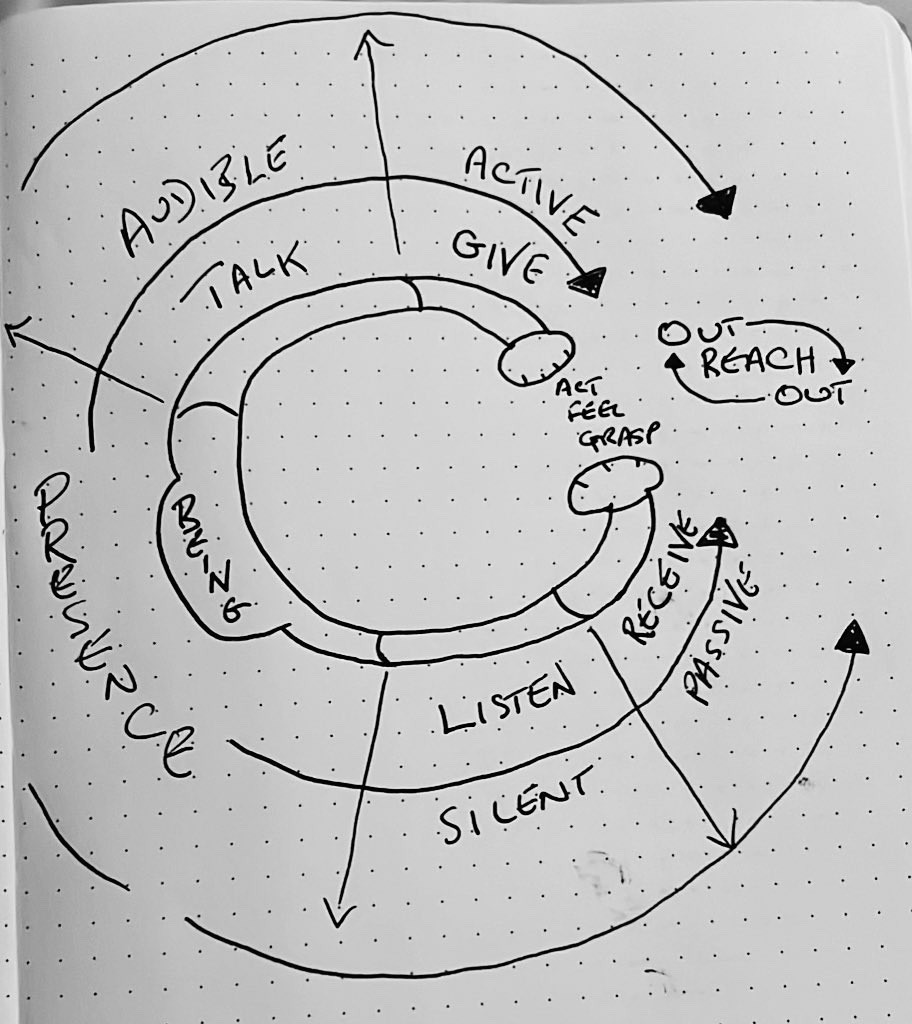
I wrote a short story about a future without money. You can read it on this blog The Mona Lisa On My Mantelpiece.
This post is just a few notes on some of the framing devices and ideas behind the story.
This is just a few notes for a design fiction on future economies. It is a reaction to an article in Byline Times on the T4 Eugenics policy of Nazi Germany. The ease with which economics and accounting can be used to de-humanise people. This relates to the long-term conservative idea of dividing people in Deserving and Undeserving, Hard Working or Lazy.
What if we removed that sense of valuing people and only sought out our sense of being human together?
Placing community, neighbourhood and that fundamental idea of Presence at the centre of our society?
This post does not reach any conclusion – I’m trying to shift from an economics and accounting sense of human worth to one based on being, presence, giving and receiving to see what it feels like and how that may create a cascade of different opportunities and problems.
The Confusion
The Confusion began as economics, as understood by humans, failed to comprehend the multiple effects of automation, artificial intelligence (AI) and blockchain. Economies, based on money, assets and work, were strained by sudden shifts. Automation and AI made multiple jobs irrelevant or very low paid. Work value completely dislocated from wages as the meaning of labour, in physical and cognitive terms, was radically revised by technologies. Capital and assets that were once clearly defined and owned fragmented under digitisation into pieces of blockchain and Non Fungible Tokens (NFT) while rental and subscription incomes disintegrated into tinier and tinier scraps. Money, as a way of being paid for the value of your labour or as a token for the value of things you owned, lost its meaning as the fundamental ideas of work and ownership faded.
The Curtain
The Confusion did not mean that work stopped. People still made things and people still needed things. What was being lost was any coherent way for humans to understand what was valuable, how it was measured and how it was exchanged. The Confusion collapsed work and assets and thus markets. However, that was not entirely true. What had happened was that the automation, AI and digitisation had made the human-readable form of economics irrelevant. The economy was now so fast, so complicated and so bitty that humans could not use their historic models of work, money and assets on it. There was a choice: remove the technologies and go back to a world that (some) humans understood with accounting, banking and economic models or go forward with something new. This was the Curtain. The Curtain meant abandoning any idea of economics being comprehensible to humans. The Curtain was drawn across that whole sector of life. Automation, AI and blockchain would be hidden behind the Curtain. There would be no Wizard of Oz behind this curtain. Humans were excluded. Bankers, accountants and economists were no longer required. Their human capacities were insufficient to understand what was happening and their involvement would only lead to more confusion or exploitation to the benefit of only a small group of humans.
The Community
With economics now hidden behind the Curtain, society no longer needed to talk of money, value and worth. The need to judge people and measure their social value to decide on who deserved what was gone. What remained was the Community. Being human was at its core and Presence was the crucial aspect. Being present or withdrawing presence from the Community mattered. However, there was no judgement or value based on being present or not. With economics removed there was no need to state that being involved was more valuable that being withdrawn. In the Community, to give was equal to receive. To talk was equal to listen. To be active was equal to be passive.
The Neighbourhood and The Well
The Community was too large an idea for most people in their day-to-day lives and so the Neighbourhood was the unit that most people used. The Neighbourhood had boundaries, perceivable in both physical places and digital places. People need to be aligned in bounded spaces to understand where they are and what they can do. Within each Neighbourhood was a Well. The Well represented how people could gift what they made and receive what they needed (all mediated behind the Curtain). All Wells interconnected between Neighbourhoods thru the Community. Global sharing enabled thru a sense of local. People had their local sense of presence and trust but surrounded by a much larger sense of global security.
One comment: